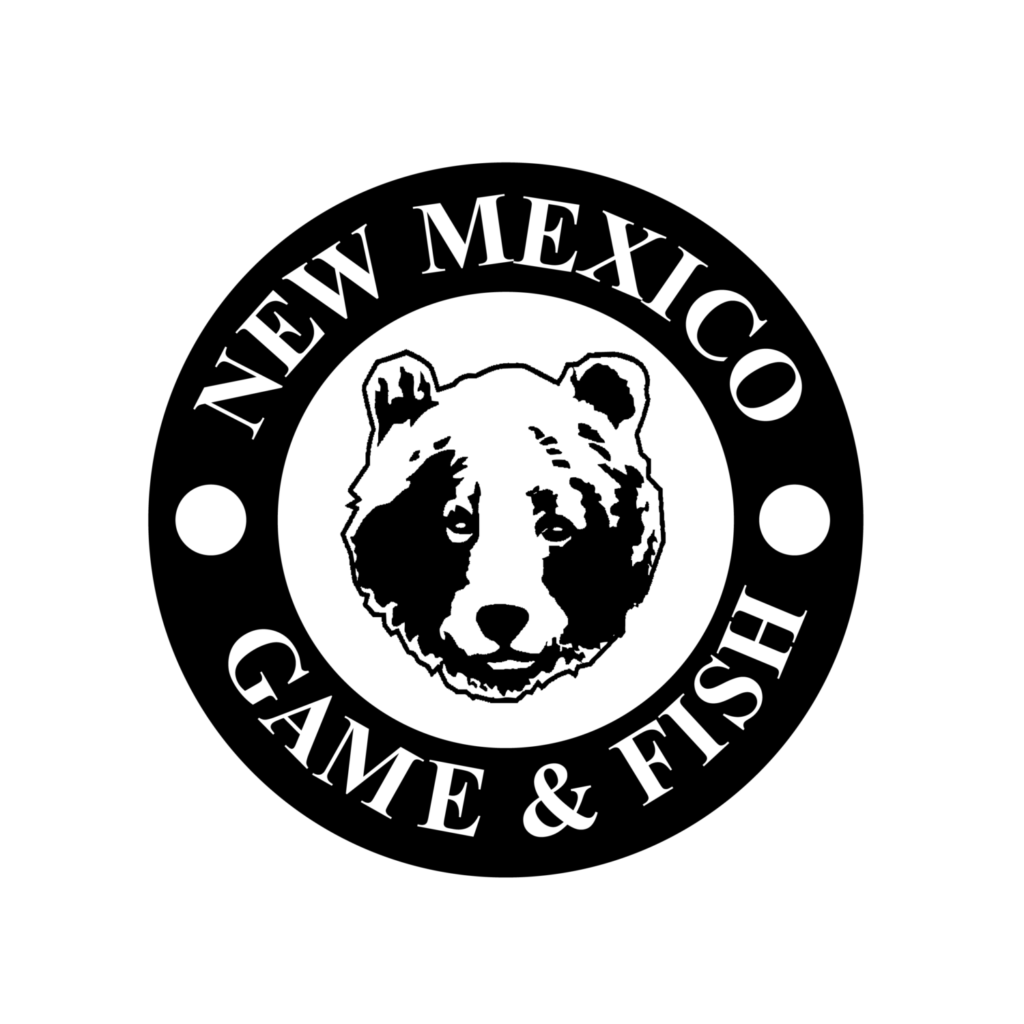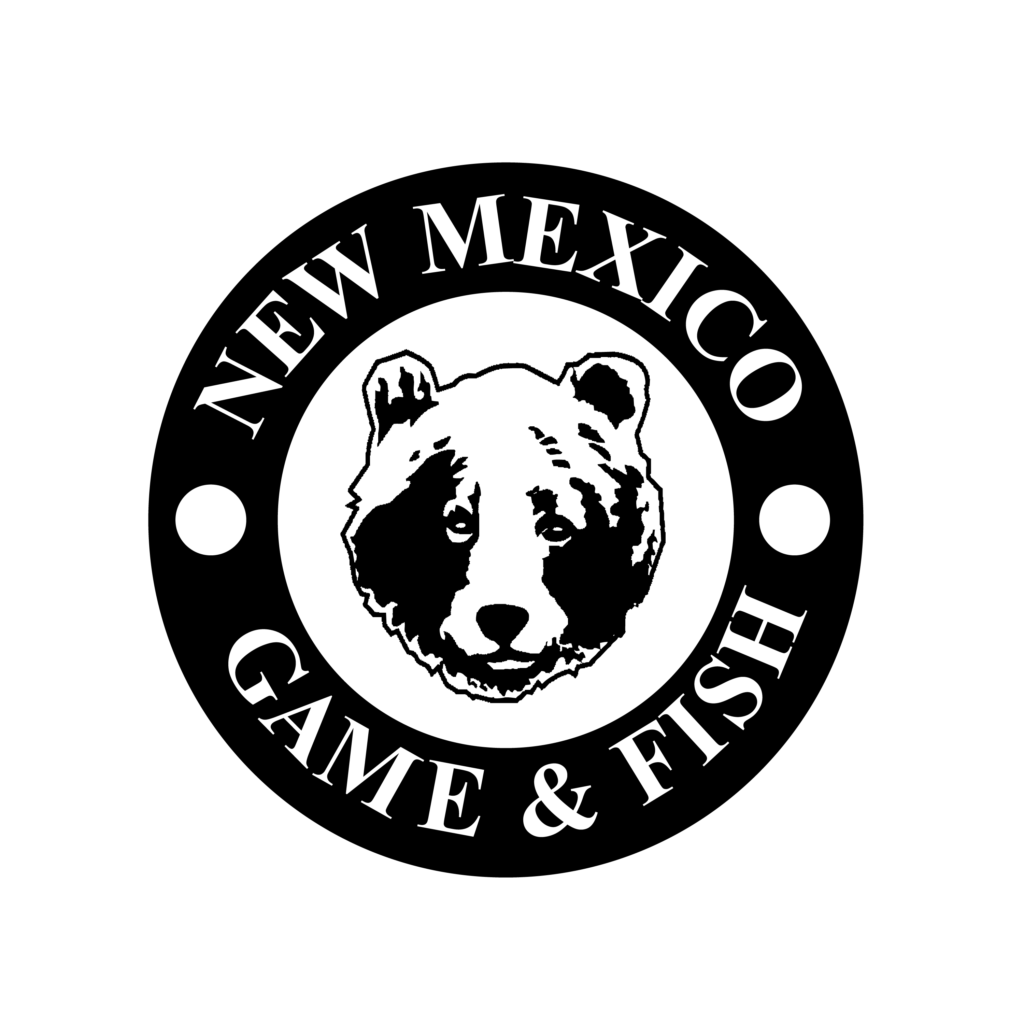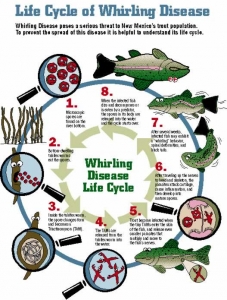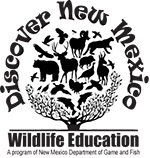
Aquatic Aliens – Too Close for Comfort
New Mexico’s Department of Game and Fish and the State Parks Division are working with other agencies, including the U.S. Fish and Wildlife Service, to keep invaders out of the state. But our enforcement agencies are limited in their ability to keep alien species out of our waters. They need your help to prevent these alien species from invading our waters and threatening our economy and natural resources.
Overview
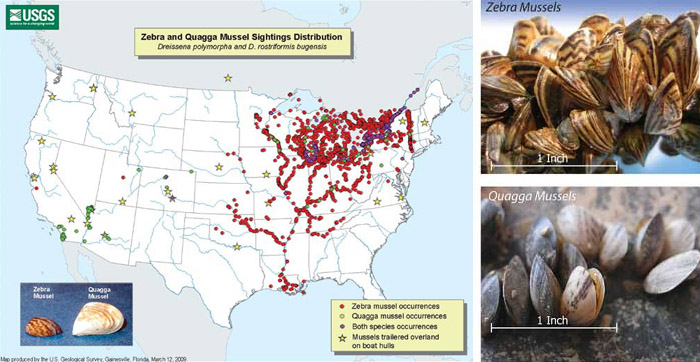
Invasive species — zebra and quagga mussel sightings and distribution map (with identification photos).
Grade level: Upper Elementary & Middle School Lesson-Grades 5 and 6-8
Content Areas: Science, Math, Language Arts
Objectives: Students learn about the damage aquatic invasive species can inflict on native species’ populations and the overall aquatic food web in ponds, lakes and rivers. Students also consider what can be done to protect aquatic ecosystems.
Method: It is suggested that the lesson, Pond Connections precede this lesson in order to set a foundation of understanding about aquatic food webs. The lesson Tugging on a Habitat is also recommended as a prerequisite.
Engage students with number 1 below then move to lesson:
- Students role play native fish and invasive fish to understand the impact of the invasive fish on the natives and on the food web.
- Students work in small groups to review aquatic food webs using an interactive food web on the Internet. Students learn new vocabulary for the activity.
- Students read informational text on aquatic invasive species. See link under Educator Information.
- Students create two-line or double bar graphs with results of activity to compare fish populations.
- Students conduct additional research on aquatic invasive species and write reports. Students propose further questions on possible effects of invasive species being introduced into New Mexico waters.
Materials for Lesson:
Science notebooks,
Department of Game and Fish publication, Too Close for Comfort-Aquatic Aliens Poised to Invade New Mexico.
Copy of publication provided with this lesson.
Computers and Smart Board.
Materials for Activity:
Calculators
graph paper
clipboards
two die for each group of 4 students
500 paper clips per group and at least 30 paper cups per group. (Acquire packs of 400 cups)
Lesson and Activity Time: Three to four- 45-minute sessions
Location: Indoor classroom and open area such as gymnasium
Academic Standards: [wpfilebase tag=file id=2171 tpl=filebrowser /]
Vocabulary
Species, invasive, ecological, habitats, biodiversity, algae, hydrilla, quagga mussels, colonize, carrying capacity, limiting factors, microorganisms, threatened, endangered, turbidity
Background
Mention the word “alien” and for most New Mexicans, Roswell comes to mind. Rather than other-worldly aliens, the focus of this lesson is plant and animal species that are alien or foreign to the waters of New Mexico. Humans have been moving plants and animals around the globe for centuries, and introducing them to new areas. Many of these alien or foreign species introduced into the U.S. have been intentional introductions, such as wheat, cattle, Russian olive trees and roses. Other aliens are hitchhikers, stowing away on ships and in cargo.
Most alien species have caused no apparent harm and many are beneficial, providing food, clothing and enjoyment for people. Yet, some of these alien species become invasive, spreading rampantly and causing great economic and ecological harm. A Cornell University research project done in 2000 estimated that 50,000 alien species in the U.S. have caused economic losses equaling $137 billion a year.
Aquatic invasive species, known by the acronym, AIS, are a clear and present danger to the aquatic habitats of the entire country. These invasive species make their way into our waters by fishing boot-waders, boats, and ballast. These species spread aggressively and they disrupt or break links in the aquatic food webs. Examples of these invasive organisms include plants, bugs, microorganisms, fish, snakes, snails, crabs, mussels and algae. These aliens can change water quality and they can create diseases in native plants and animals. Invasive fish species can replace or eliminate native fishes and this is problematic when those native species are listed as threatened or endangered. An example of an invasive fish in some New Mexico lakes is the common carp. Common carp is a very aggressive predatory fish species and can compete with smaller native and sportfish such as rainbows. Carp are originally native to Canada and were once common in the Great Lakes states. One way of controlling carp populations is to allow unlimited catch so that anglers can take as many as possible while fishing.However, this is the least effective means. Biological control is sometimes used. For example, northern pike have been used to control common carp populations. Physical barriers have been used. A cage known as the Williams cage has been used successfully by entrapping carp while 99.9% of the native fish can pass through.
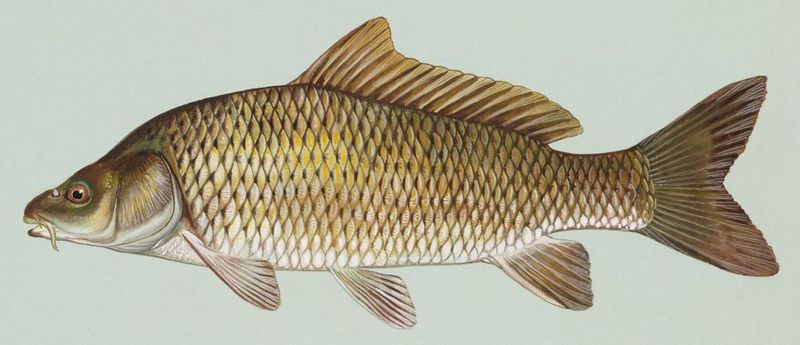
Some of the aquatic invasive species are too close for comfort. For example, one aquatic weed, hydrilla, costs Florida almost $15 million annually to control it in their waterways. Hydrilla has not invaded New Mexico, but several waterways in nearby Texas are infested with it, and many of those rivers originate in New Mexico. Potentially greater threats, the zebra and quagga mussels are at the borders of New Mexico. These aliens were discovered in the U.S. in the late 1980’s in the Great Lakes region. In less than a decade, zebra mussels invaded 19 states in the Mississippi river drainage and are now found in the Missouri and Arkansas Rivers. Quagga mussels are found primarily in the Great Lakes region, but after efforts to restrict their infestation, quagga mussels have been discovered in lakes Mead, Havasu and Mojave on the lower Colorado River. Even closer to New Mexico’s doorstep, zebra mussels were found in Colorado’s Pueblo reservoir, less than 90 miles from the New Mexico border.
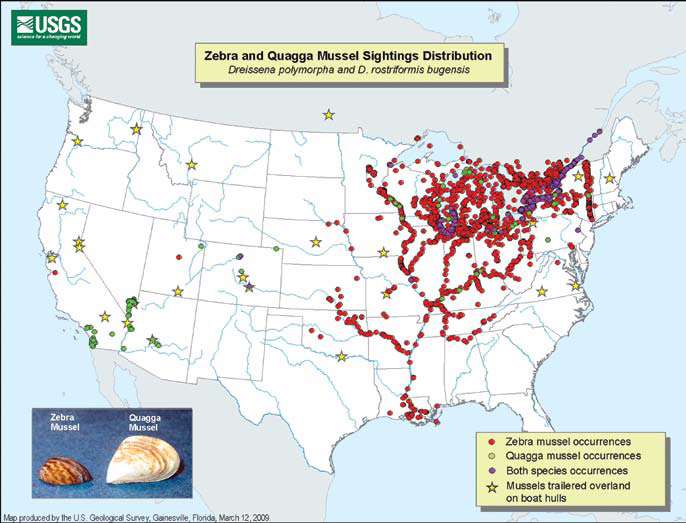
Click image for full article to appear in a new window.
Additional information on how these mussels colonize areas and their detrimental impact on ecosystems, municipal water supply pipes, hydroelectric plants and industrial facilities can be found on the Game and Fish website at this link: http://wildlife.dgf.nm.gov/fishing/fishing-regulations/aquatic-invasive-species/
[wpfilebase tag=file id=1474 tpl=simple /]
Some current AIS problems in New Mexico:
• Eurasian water-milfoil, an aquatic plant that can form thick mats and compete with native aquatic plants, is found in the Rio Grande, Rio Chama and the Gila.
• Whirling disease is another invader to New Mexico. It was first found here in 1998 and is now found in many of our rivers. This parasite infects young trout, eventually crippling them. The NM Department of Game and Fish has spent $7 to 8 million dollars keeping whirling disease out of the state fish hatcheries as well as ongoing monitoring for any appearance of the disease. NM Game and Fish hatcheries raise rainbow trout, some warm water fish species and the state fish, Rio Grande cutthroat trout.
• Golden alga is yet another aquatic invasive species found in New Mexico. Golden alga is not dangerous to people, but it produces a toxin that kills gill-breathing animals and has caused the death of thousands of fish in McAllister, Bataan, Brantley and Carlsbad Municipal reservoirs. It is also found in the lower Pecos River in southeast New Mexico.
• Common carp is a non-native fish species introduced to the U.S. from China in 1831 and introduced to New Mexico in 1883. Common carp has been cultivated in China since the fifth century B.C. In Europe, domestication began in the first century A.D. The use of common carp in the U.S. is low. Because this species disturbs the original habitat by causing increased turbidity, uprooting aquatic vegetation, and feeding upon the eggs of more desirable fishes, it is considered an aquatic invasive species. Carp are in several of New Mexico’s larger reservoirs as well as in the San Juan, parts of the Gila and Pecos Rivers and the Rio Grande. It can be found in ponds as well.Carp were introduced to New Mexico in the 1800’s.
Procedure
Engage with activity; follow with lesson.
Activity: (meets Common Core reading standard by having students integrate information in a different format)
*Suggestions to facilitate the activity:
• Demonstrate with whole group first to provide baseline understanding of game-like activity.
• Indicate time-elapsed for each round once groups are working. For example, after Round 1 say “one year later” and go onto Round 2. This may help students understand that change happens over time.
1. Divide the class into groups of four. The four students in each group separate into pairs. One pair will be the native species and the other pair will be the common carp. Each pair will be given one die. Decide which pair will be natives and which the invasive carp.
2. Students use round table tops as platform for activity. As an option, take students outside on a nice day. Mark off small “pond” areas with hula hoops or if in an area where sidewalk chalk can be used, have students draw a circular area representing a pond.
a. Students follow procedure below to investigate the relationship between the introduction of an invasive species, common carp, represented by the cups and its effect on the native species represented by the paperclips. The carp are often introduced to the pond by someone who thought they had grown too large for their aquarium.
b. Students prepare to record data in their science notebook. Each student should have clipboard, notebook, and pencil.
c. Students place 20 of the paperclips and 2 Dixie cups into their “pond.”
d. Students draw a chart on their paper with two columns listing the number of native fish (20) and the number of carp (2). This is their starting population for each.
Native Species of Fish
Common carp
Original
20
2
e. Round 1–The native species pair will roll their die first and add in that number of fish. Then the common carp pair will roll their die and add in that number of cups.
f. The common carp now eat some of the native species: Place 1 native fish (paperclip) into 1 carp (cup). This ends the first round and students record their data for end of Round 1. Students count the number of each—the free-swimming natives/paperclips, and the number of cups/carp. Record on chart. Assuming each fish increased by 6 in Round 1 the chart might look like:
Native Fish Species
Common Carp
Original
20
2
Round 1
18
8
g. Round 2–Students roll again with natives rolling die first then carp. Repeat procedure of placing rolled numbers of fish into the pond and record data each time. Students should try to complete 5 rounds. A possible data table might look like the following. The numbers preceded by the + sign are the roll of the die for each round.
Native Fish Species
Common Carp
Original
20
2
Round 1
+6 18
+6 8
Round 2
+5 11
+4 12
Round 3
+5 2
+2 14
Round 4
+6 0
+3 17
h. In this example, all of the native fish are gone by round 4. Such a rapid loss could be possible in a closed pond system where the native fish could not escape and swim to a different area. In areas where ponds or lakes are connected to streams and rivers, the native fish could find escape routes.
3. Wrap up activity by having students create either a two-line graph or a double bar graph to see the relationship between native and invasive species. Conduct a class discussion on the activity and how closely it could mimic the actual situation in some New Mexico river systems or constructed ponds, where carp are often found.
4. Also, discuss limitations of this model. Introduce concept of limiting factors in ecosystems. In this model, carp are limiting factors.
5. Assign a written report on aquatic invasive species, either the carp or another species discussed during lesson-below. Students may need to do more research by looking at the BISON-M data base on the Department of Game and Fish web site or by calling a Fisheries biologist at the Department or at the United States Fish and Wildlife Service office in Albuquerque. The US Geological Survey also has information on invasive species. (See resource list in Appendices.)
Lesson:
1. Use Pond Connections and Tugging on a Habitat lessons to set foundational understanding for aquatic food webs.
2. Discuss the food web with students and review concepts that ecosystems work best when they are balanced and each organism is performing its duties in that ecosystem.
3. Students work in small groups to generate questions and answers about what types of things/events could completely disrupt the food web. Students should strive to be specific in their explanations of how the disturbance affects food chains and ultimately the entire food web. Each student contributes to oral presentation of ideas. Teacher asks guiding questions as formative assessments.
NOTE: There is an excellent Internet site with an interactive aquatic food web that students can manipulate and see effects of food web changes and disturbances— JASON Digital Lab: Earth Systems (projected onto a Smart Board). At web site, open Biosphere Section and aquatic food web. This site also has excellent graphics on how food webs form with explanations for producers, consumers, herbivores, carnivores andomnivores. All of these terms are presented in the perquisite lesson, Pond Connections.
4. The JASON Digital Lab can reinforce foundational knowledge developed while doing the Pond Connections lesson.
5. Introduce vocabulary for this lesson using Smart board if available or chart. Each student records vocabulary and definitions in science notebooks.
6. With students still in small groups, each group has a teacher-appointed spokesperson to read one term with its definition. Allow for guided discussion to clarify and offer examples. Students read New Mexico Department of Game and Fish publication, Too Close for Comfort – Aquatic Aliens poised to Invade New Mexico. Document is provided with this lesson. This is a non-technical document. Teachers may decide to read as a whole group.
NOTE: Meeting Common Core State Standards in reading and speaking, conduct group discussion on Game and Fish article to cite textual evidence regarding aquatic invasive species in the U.S. and in NM.
7. Drawing on background knowledge from prerequisite lessons, and interactive JASON Internet food web, students can discuss the detrimental effects of introducing invasive species and resulting loss of biodiversity in the ecosystem.
8. Students discuss how pond life in general could be affected by one species increasing or decreasing. This promotes critical and divergent thinking.
Assessment
Questions to consider for discussion and written report:
a. Under the simulated conditions, what was devastating about the introduction of the invasive species? (There was no natural predator in the ecosystem to keep the invasive species in check. It was able to take over and decimate the native fish population.)
b. How would the introduction of this invasive species affect animals, including humans, higher up on the local food web? (Animals higher on the food chain would have to adapt to eating this new invasive species, or they would have to move on to other areas.)
c. What possible solutions could there be to the problem of these invasive species? (Once an invasive species is established, it is very difficult to wipe it out. The population could be managed through no-limits on fishing it or predators could be introduced. However, this often leads to additional problems.)
d. Create a brochure, poster or sign explaining solutions to spreading invasive species.
e. What was the process of the common carp disrupting the food web? Was it immediate or did it occur over time? What appears to be the tipping point in favor of the invasive species over the native species? (The carp took some time to become established. Once it was established, it completely took over. The tipping point came when the carp were able to eat more than the native species reproduced in one round or one year.)
f. Why don’t other fish wipe out minnow populations, or are there situations where other fish act as limiting factors by competing with native fish? This will take some research. It does occur. One example includes the Colorado River native and historic fish. The Department of Game and Fish is a partner in the recovery plans along the San Juan River near Farmington, for the razorback sucker and the Colorado pikeminnow, two native fish of the Colorado River Upper Basin.
*See document [wpfilebase tag=file id=2173 tpl=filebrowser /] Upper Colorado River Endangered Fish Recovery Program | San Juan River Basin Recovery Implementation Program – (page 18 shows invasive fish in a pictoral graph).
Special Resources:
Too Close for Comfort-Aquatic Aliens Poised to Invade New Mexico, Reese Brand Phillips. NM Department of Game and Fish
The activity is adapted from Discovery Education and Recreational Boating and Fishing Foundation –takemefishing.org. Unwanted Invaders
 Internet site with an interactive aquatic food web that students can manipulate and see effects of food web changes and disturbances — JASON Digital Lab: Earth Systems. At web site, open Biosphere Section and aquatic food web. This site also has excellent graphics on how food webs form with explanations for producers, consumers, herbivores, carnivores and omnivores.
Internet site with an interactive aquatic food web that students can manipulate and see effects of food web changes and disturbances — JASON Digital Lab: Earth Systems. At web site, open Biosphere Section and aquatic food web. This site also has excellent graphics on how food webs form with explanations for producers, consumers, herbivores, carnivores and omnivores.
